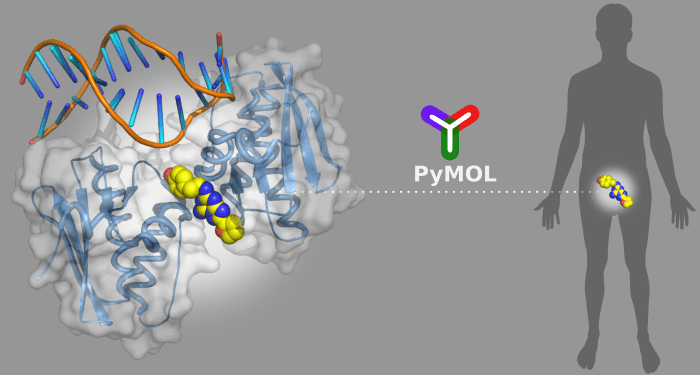New apps and software may bring convenience to our daily lives, but their reach also extends to areas like drug discovery research. As most diseases are caused by malfunctioning proteins or DNA in the body, scientists strive to find the correct molecule that binds to and interacts with these biological targets. Hoping to rectify physiological responses, scientists first must identify a target’s locations where a drug molecule can bind. Second, they must investigate a large number of potential drug molecules for their interactions with the target. Lastly, scientists need to examine the impacts of a molecule on the target—tasks which are overall quite challenging and time-consuming.
By visualizing the three-dimensional (3D) structures of the disease-related targets, scientists can better understand the underlying problems and design new molecular constructs to tackle the issues accordingly. PyMOL is a powerful tool that displays the 3D structures of biological targets and offers up to 12 different stereo visualization modes. Users can efficiently highlight and distinguish various important structural features in the targets, particularly the suitable binding sites for drug molecules.
Since it is a Python-based software, PyMOL has the advantage of embedding many useful Python-based plugins to enhance its functionalities for drug discovery calculations. Python itself is an “easy-to-script” programming language. Scientists without extensive programming experience can also develop plugins with great ease. Many available plugins online cover the key steps in computer-aided drug design, from simple tasks like in situ molecule editing to more complicated tasks like the analyses of drug-target interactions. Effectively, PyMOL has become a universal platform for drug design. A recent review from WIREs Computational Molecular Science, “Using PyMOL as a platform for computational drug design”, provides an excellent introduction to present 3D structures visualization and computational drug design in PyMOL.
Text contributed by the authors.

















